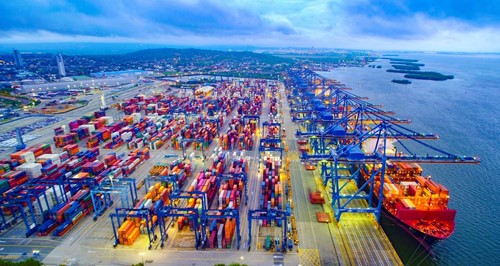
The Permanent Secretariat of the Latin American and Caribbean Economic System (SELA) presented the results of the survey on “Perception of Digital Port Transformation in Latin America and the Caribbean,” conducted within the framework of the work programme of the Network of Digital and Collaborative Ports, focused on digital transformation and technology adoption.
According to the results, 83% of those surveyed consider Panama, Peru, Mexico, Brazil and Colombia to be the leading countries in port digital transformation at the regional level, with the ports of Callao, Santos, Manzanillo, Cartagena and those located in the cities of Colon and Balboa standing out.
On the global scale, 65% consider the ports of Rotterdam, Shanghai, Singapore, Hamburg, Hong Kong, Valencia and Antwerp as a world reference in digital transformation.
The study was conducted among participants from 20 Member States of SELA who attended the “Online Seminar on Exponential Ports,” organized last April in collaboration with CAF-development bank of Latin America, the National Port Authority (APN) of Peru, the Port Authority of Santander – Spain, and NextPort.AI.
The survey provided insight into the perception of ports in Latin America and the Caribbean on the digital transformation of the sector. It showed that the use of innovative technologies such as autonomous vehicles, digital twins, blockchain, virtual reality, artificial intelligence (AI), machine learning and robotics are used incipiently in the region.
Regarding the degree of digital transformation, 57.3% of respondents consider that the institutions in which they work have been transformed by a maximum of 10.0%. On the other hand, 22.2% do not have a strategy in place, while 54.3% indicate that a strategy is being considered.
At the budget level, 53% of respondents report that their institution regularly allocates resources to promote digital transformation. Of these, about half of the respondents say that less than US$ 500,000 per year is allocated to digital transformation in the institutions of which they are part. This figure is considerably low compared to the amount invested by global benchmark ports. Sixty-two percent of respondents believe that 6% to 15% of the institution’s annual budget should be allocated to promote digital transformation in the maritime-port sector and around 24% believe that more than 15% should be dedicated.
“The use of the technologies of the second wave of port digitalisation is becoming increasingly indispensable if the purpose of the ports in the region is to migrate to a paperless port, reduce cargo movement times and costs, improve traceability along the logistics chain and port services and optimise response times and decision making,” concludes the study, which can be consulted on our Web site.
